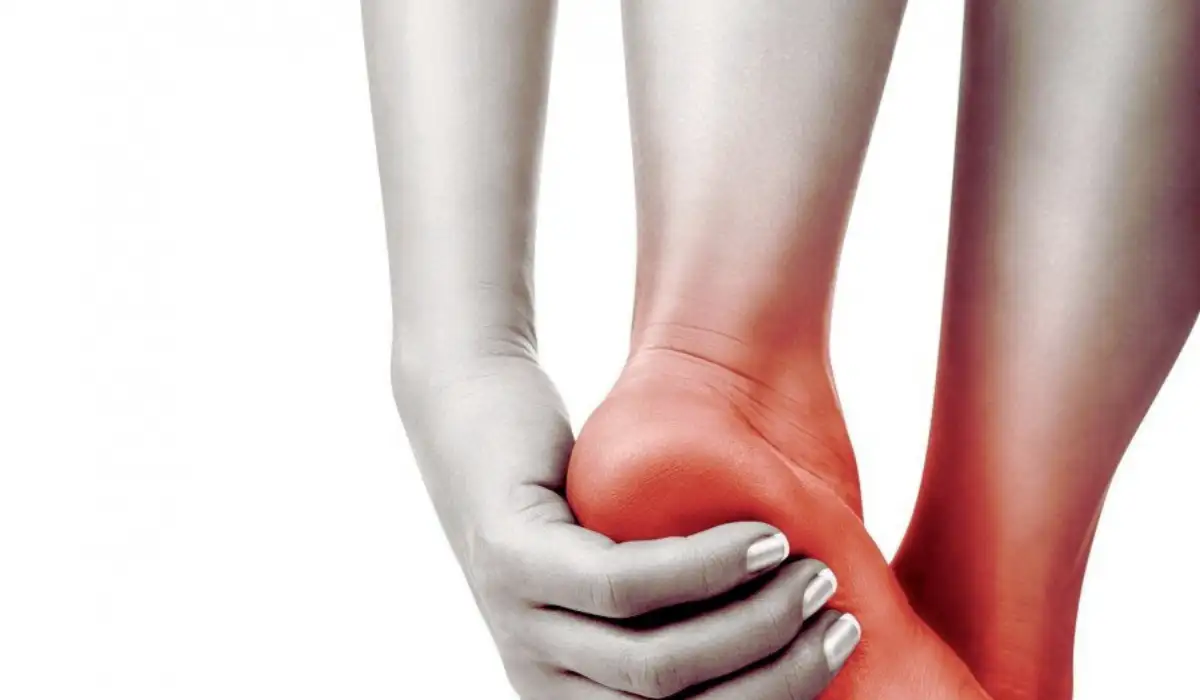Plantar fasciitis can be a painful and debilitating condition, but with the right approach, it’s possible to find relief and start on the path to recovery in just one week. In this comprehensive guide, we’ll explore everything you need to know about plantar fasciitis, including its symptoms, causes, diagnosis, treatment options, prevention strategies, and more.
For many, the persistent heel pain and discomfort can severely limit mobility and impact daily activities. However, amidst the frustration and discomfort, hope shines through in the form of a promising question: Is it possible to cure plantar fasciitis in just one week? In this comprehensive guide, we embark on a journey to uncover effective strategies and remedies for swift relief from plantar fasciitis.
What Is Plantar Fasciitis?

Plantar fasciitis is a common foot condition characterized by inflammation of the plantar fascia, a thick band of tissue that runs across the bottom of your foot, connecting your heel bone to your toes. This inflammation can cause stabbing pain near the heel, especially with the first steps in the morning or after prolonged periods of rest.
What are the symptoms of plantar fasciitis?
➡️ Heel Pain
This is often the primary symptom of plantar fasciitis. It’s typically described as a stabbing pain that occurs with the first steps in the morning or after periods of rest, such as sitting or standing for a while.
➡️ Pain in the Arch of Your Foot
Along with heel pain, individuals with plantar fasciitis may experience pain in the arch of the foot. This pain can vary in intensity and may worsen with prolonged standing or walking.
➡️ Stiffness
Stiffness in the foot, particularly in the morning or after periods of rest, is another common symptom. This stiffness often accompanies the initial steps taken after a period of inactivity.
➡️ Swelling Around Your Heel
Inflammation of the plantar fascia can lead to swelling around the heel area. Swelling may be noticeable, especially after periods of activity or by touching the affected area.
➡️ A Tight Achilles Tendon
The Achilles tendon connects the calf muscles to the heel bone. In plantar fasciitis, the Achilles tendon may become tight or strained due to compensatory mechanisms as a result of foot pain. This tightness can contribute to the overall discomfort experienced by individuals with this condition.
What causes plantar fasciitis?
Several factors can contribute to the development of plantar fasciitis, including:
1. Overuse: Activities that put repeated stress on the plantar fascia, such as running or standing for long periods, can lead to inflammation and injury.
2. Foot Structure: Flat feet, high arches, or abnormal foot mechanics can increase the risk of plantar fasciitis.
3. Improper Footwear: Wearing shoes with inadequate support or cushioning can strain the plantar fascia and lead to inflammation.
4. Obesity: Excess weight puts added pressure on the feet, increasing the risk of plantar fasciitis.
Risk factors of plantar fasciitis
This passage provides a comprehensive overview of various factors contributing to the development of plantar fasciitis, a common cause of heel pain. Let’s break down the key points:
✅ Obesity or Sudden Weight Gain
Excess weight can strain the plantar fascia, reducing its ability to absorb shock, which may lead to heel pain. Additionally, increased body mass index (BMI) is strongly associated with plantar fasciitis, especially in nonathletes. Pregnancy, which increases weight placed on the feet, also raises the risk.
✅ Pressure on the Heels
People who engage in activities like frequent walking, running, or standing for long periods, such as certain occupational roles, are at higher risk. Excessive stretching and tightness of the Achilles tendon can also strain the plantar fascia.
✅ Foot Shape and Gait
Individuals with overpronation (rolling inward of the arches), flat feet, or very high arches are at increased risk due to the altered distribution of pressure on the feet. Unusual running or walking gaits can also contribute to increased pressure on the plantar fascia.
✅ Diabetes
Those with type 2 diabetes, particularly those with higher BMI, may have thicker plantar fascia, increasing the risk of plantar fasciitis. Common comorbidities of diabetes, such as obesity and a sedentary lifestyle, also contribute to this risk.
✅ Arthritis
While there’s no direct link between plantar fasciitis and arthritis, limitations in foot and ankle mobility due to arthritis may increase the risk of developing conditions like plantar fasciitis.
✅ Wearing the Wrong Shoes
Ill-fitting shoes can impair walking and place additional stress on the plantar fascia. Proper footwear, especially for those with diabetes or circulatory problems, is crucial in preventing foot-related health issues.
Overall, the passage emphasizes the importance of maintaining a healthy weight, wearing appropriate footwear, and addressing foot shape, gait abnormalities, and underlying health conditions to reduce the risk of plantar fasciitis.
How is plantar fasciitis diagnosed?
A healthcare provider can typically diagnose plantar fasciitis based on a physical examination and a review of your symptoms. In some cases, imaging tests such as X-rays or MRI scans may be ordered to rule out other possible causes of heel pain.
How is plantar fasciitis treated?
While plantar fasciitis can be stubborn, there are several treatment options that can help alleviate symptoms and promote healing:
✅ Rest: Give your feet a break from activities that exacerbate the pain, such as running or standing for long periods.
✅ Ice Therapy: Apply ice to the affected area for 15-20 minutes several times a day to reduce inflammation and pain.
✅ Stretching Exercises: Gentle stretching exercises for the calf and plantar fascia can help improve flexibility and reduce tension.
✅ Orthotic Inserts: Custom or over-the-counter orthotic inserts can provide support and cushioning to alleviate pressure on the plantar fascia.
✅ Night Splints: Wearing a night splint while sleeping can help stretch the plantar fascia and prevent morning pain.
✅ Anti-inflammatory Medications: Over-the-counter medications such as ibuprofen or naproxen can help reduce pain and inflammation.
✅ Physical Therapy: A physical therapist can provide targeted exercises and techniques to address imbalances and improve foot mechanics.
How to cure plantar fasciitis in one week?
Prevention is key to avoiding the recurrence of plantar fasciitis. Here are some tips to help prevent this condition:
1. Choose Supportive Footwear: Wear shoes with adequate arch support and cushioning, especially during activities that involve prolonged standing or walking.
2. Gradual Activity Progression: Avoid sudden increases in activity level, such as mileage or intensity when starting a new exercise routine.
3. Stretch Regularly: Incorporate stretching exercises for the calves and plantar fascia into your daily routine to maintain flexibility and prevent tightness.
4. Maintain a Healthy Weight: Excess weight can increase pressure on the feet and exacerbate plantar fasciitis, so strive to maintain a healthy weight through diet and exercise.
How long does plantar fasciitis last?
The duration of plantar fasciitis can vary from person to person, but with appropriate treatment and self-care measures, many individuals experience significant improvement within a few weeks to months. However, it’s important to continue with preventive measures even after symptoms resolve to reduce the risk of recurrence.
Are plantar fasciitis and heel spurs the same thing?
While plantar fasciitis and heel spurs are related, they are not the same condition. Plantar fasciitis involves inflammation of the plantar fascia, while heel spurs are bony growths that develop on the heel bone in response to chronic tension or stress on the plantar fascia. Heel spurs may coexist with plantar fasciitis, but they are not always present, and not everyone with plantar fasciitis will develop heel spurs.
Also Read: Pain In Abductor Hallucis: How To Cure Swelling In Your Feet?
Conclusion
while plantar fasciitis can be a challenging condition to manage, it’s possible to find relief and speed up the healing process with the right approach. By following the tips outlined in this guide and seeking appropriate medical care, you can alleviate pain, promote healing, and get back to enjoying your favorite activities in no time.
References
- Riddle DL, Pulisic M, Pidcoe P, Johnson RE. Risk factors for Plantar fasciitis: a matched case-control study. J Bone Joint Surg Am. 2003 May;85(5):872-7.
https://pubmed.ncbi.nlm.nih.gov/12728038/ - Bm SA, Tiwari V, Bakde AM, Dwidmuthe S, Roy M. Ultrasonographic Assessment of Indian Patients With Plantar Fasciitis and Its Clinical Correlation: A Prospective Observational Study. Cureus. 2023 Mar;15(3):e35764.
https://www.ncbi.nlm.nih.gov/pmc/articles/PMC10072183/





